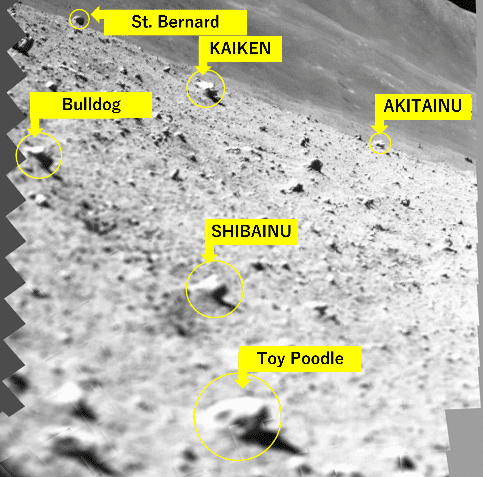

The Japan Aerospace Exploration Agency (JAXA), along with the University of Aizu and Ritsumeikan University, released images captured by the Multi-Band Camera (MBC) onboard the Smart Lander for Investigating Moon (SLIM).
After the moon landing and before shutting down of the spacecraft power, MBC released the locking mechanism to withstand the impact upon launch and landing, then conducted scanning operations. The scanning is performed by moving the adjustable mirror and is for preliminary examination of the rocks of scientific interest that are situated around the SLIM landing site. The accompanying figure shows a landscape image created by synthesizing 257 low-resolution monochrome pictures. Based on this landscape image, the team is sorting out rocks of interest, assigning a nickname to each of them, with intent of communicating their relative sizes smoothly by the names. Preparation is underway to promptly conduct 10-band high-resolution spectroscopic observations once the solar illumination condition improves and SLIM recovers by the power generated by the solar array.
Image Credit: JAXA, RITSUMEIKAN UNIVERSITY, THE UNIVERSITY OF AIZU